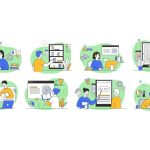Views: 2
Explore why “your best teacher is your last mistake” remains timeless, with evidence-backed insights, leadership lessons, and daily practices to transform failure into progress.
Key Takeaway Summary
- Embrace a “mistake-learning loop” to convert errors into measurable growth.
- Use reflection, feedback, and experimentation to improve performance at work and in life.
- Treat failure as data: analyze causes, design small tests, and build antifragile habits.
Table of Contents
- 1 Introduction to Your Best Teacher Is Your Last Mistake
- 1.1 The Enduring Meaning of “Your Best Teacher Is Your Last Mistake”
- 1.2 Personal Growth Perspective — Living the Wisdom of “Your Best Teacher Is Your Last Mistake”
- 1.3 Professional and Leadership Insight — Building Teams That Learn
- 1.4 Psychological and Philosophical Depth — Why Errors Teach So Well
- 1.5 Cultural or Historical Context — Attribution and Evolution
- 1.6 Practical Application — How to Apply “Your Best Teacher Is Your Last Mistake” Today
- 1.7 Examples — Turning Mistakes Into Momentum
- 1.8 Conclusion on Your Best Teacher Is Your Last Mistake
- 1.9 Frequently Asked Questions
Introduction to Your Best Teacher Is Your Last Mistake
“Your best teacher is your last mistake.” This compact statement, sometimes attributed to consumer advocate Ralph Nader and at other times regarded as a proverb, carries a durable truth: the most immediate, vivid, and actionable lessons often come from what just went wrong. Beyond a motivational poster, this idea draws on centuries of philosophical insight and decades of psychological and organizational research. From Stoic reflections on error and resilience to modern behavioral science and product development methodology, the wisdom is consistent: feedback from failure is uniquely powerful because it is concrete, timely, and specific.
In this article, we’ll explore the full meaning and practical power of “your best teacher is your last mistake.” We’ll integrate modern research on learning, performance, and resilience, show how leaders and professionals can build systems that learn from errors, and provide actionable tools for personal growth. You’ll learn how to transform missteps into a repeatable process for improvement, why this mindset reduces fear and increases innovation, and how to apply it daily without glorifying failure for its own sake.
Let’s begin by tracing why this phrase has such enduring pull—and how you can use it to change the way you think, work, and lead.
The Enduring Meaning of “Your Best Teacher Is Your Last Mistake”
At its core, the phrase argues that the most useful teacher is not a distant theory or abstract advice—it’s the most recent discrepancy between what you intended and what actually happened. That discrepancy reveals where your mental model, your process, or your assumptions fell short. And because your “last mistake” is so fresh, it’s the optimal moment to learn: details are vivid, the context is intact, and the motivation to improve is high.
This idea aligns with:
- Error-driven learning in cognitive science, where prediction errors update beliefs.
- Deliberate practice in skill acquisition, where targeted feedback at the edge of competence accelerates improvement.
- Agile and lean methodologies in business, where short cycles, retrospectives, and small experiments systematically translate failure into better outcomes.
The message isn’t to seek failure. It’s to seek fast, honest feedback, reduce the cost of error, and design your work and life so that every mistake becomes a step forward.
Personal Growth Perspective — Living the Wisdom of “Your Best Teacher Is Your Last Mistake”
Your last mistake is a mirror, not a verdict. To make it your best teacher, you need a simple, repeatable “mistake-learning loop.”
The Mistake-Learning Loop (Reflect → Diagnose → Design → Test → Track)
- Reflect (what happened vs. what I intended)
- Write a 3–5 sentence narrative immediately after the mistake.
- Clarify the goal, the action taken, and the outcome.
- Diagnose (root cause, not blame)
- Ask: Was this a knowledge gap, a process gap, or an attention/energy gap?
- Use “5 Whys” to go past the first explanation.
- Design (one small change)
- Choose a single change that would have prevented or reduced the error.
- Keep it small enough to try this week.
- Test (low-stakes experiment)
- Create a checklist, template, or alarm; try it in the next similar situation.
- Track (evidence of learning)
- Measure: mistake frequency, severity, or time saved in the next 2–4 weeks.
- If it works, standardize it; if not, iterate.
This loop reduces shame and increases agency. Instead of ruminating, you route emotion into learning. Over time, you build “antifragile” capacity: systems that benefit from stressors and variability by improving under pressure.
Themes for Individuals
- Learning from mistakes examples in everyday life
- Growth mindset strategies for failure and resilience
- How to overcome fear of failure and perfectionism
- Journaling prompts for learning from mistakes
- How to turn failure into feedback
Use micro-habits to keep this alive:
- One-line post-mortem: “Today’s mistake → insight → next time I will…”
- Weekly “fail forward” review: 10 minutes every Friday to log the top lesson.
- Pre-mortem: before a task, list 3 ways it could fail and add safeguards.
Professional and Leadership Insight — Building Teams That Learn
In organizations, “your best teacher is your last mistake” becomes a management system. The goal is not to tolerate errors blindly, but to surface them quickly, learn cheaply, and prevent repeats—especially the severe ones.
Psychological Safety + High Standards
Teams learn fastest when members feel safe to speak up about risks and missteps—while the bar for quality remains high. Psychological safety without accountability breeds comfort; accountability without safety breeds fear. The winning combination is candor plus care, where the team treats failure as data while guarding customers and the business with smart risk controls.
Practical moves:
- Run blameless postmortems after incidents. Focus on systems, not scapegoats.
- Keep retrospectives lightweight and regular (biweekly or after major milestones).
- Celebrate “good catches” when someone spots a problem early.
Operationalizing the Learning
- Incident templates: Capture timeline, contributing factors, impact, and specific prevention steps.
- Error budgets: In engineering, allocate how much unreliability is acceptable; invest learning time when exceeded.
- Change logs: Record what you changed after a mistake; revisit these in quarterly reviews.
- Pre-commit checklists: Pilots and surgeons reduce routine errors with checklists; knowledge workers can do the same for launches, critical emails, financial decisions, or handoffs.
Leadership Framing
Leaders set the tone by:
- Owning their last mistake publicly and sharing the learning loop they used.
- Funding small experiments to derisk big bets.
- Distinguishing between “intelligent failures” (in new territory, with hypotheses and safeguards) and “preventable failures” (in known processes) and treating them differently.
Psychological and Philosophical Depth — Why Errors Teach So Well
The Science of Error-Driven Learning
- Prediction error: In learning theory, the gap between expected and actual outcomes drives updating. When your brain’s model is wrong, the “surprise” becomes a learning signal (Rescorla-Wagner style insights).
- Desirable difficulties: Struggle that is neither trivial nor overwhelming enhances long-term retention. Errorful learning, when guided by feedback, strengthens memory and transfer.
- Growth mindset: Believing abilities can develop through effort fosters persistence after setbacks, leading to greater improvement over time.
Together, these show why the focus on your last mistake is so potent—it’s the freshest, strongest learning signal you have.
Philosophy and Culture of Error
- Stoicism: You cannot control outcomes, only judgments and actions; errors are prompts to adjust what is up to you.
- Pragmatism: Truth is what “works” in practice; experiments and outcomes shape beliefs.
- Buddhist perspective: Non-attachment reduces shame; observing error without clinging allows wise correction.
The philosophical throughline: humility. Mistakes expose the limits of our models. Humility invites revision, which invites progress.
Cultural or Historical Context — Attribution and Evolution
The phrase “Your best teacher is your last mistake” circulates as a modern proverb and is frequently attributed to Ralph Nader, an American political activist and consumer advocate. While it appears widely in quotation compendiums and online collections, definitive origin is hard to pin down, and it functions most accurately as either a proverb or a popular aphorism commonly linked to Nader’s advocacy for accountability and learning through corrective action.
What matters practically is its resonance with movements that shaped modern quality and safety:
- Continuous improvement (kaizen) in manufacturing and services emphasizes small, frequent improvements sparked by frontline observations.
- Safety science in aviation and healthcare formalized after-action reviews, checklists, and just culture practices.
- Startup and product disciplines (lean, agile) institutionalized rapid experimentation and iteration.
These traditions operationalize the core idea: confront error quickly, learn systematically, and improve continuously.
Practical Application — How to Apply “Your Best Teacher Is Your Last Mistake” Today
A 7-Day Plan to Turn Mistakes Into Progress
Day 1: Set intent and define a log
- Create a “Last Mistake Log” with columns: date, context, mistake, root cause, tiny fix, next test, result.
Day 2: Build one pre-flight checklist
- Choose a recurring task prone to error (client emails, code deploys, expense reports).
- Draft a 5–7 item checklist; run it on the next attempt.
Day 3: Practice a blameless self-postmortem
- Write a short, neutral analysis of a recent mistake. End with one standard you’ll change.
Day 4: Insert a feedback loop
- Ask a colleague or friend for “one thing to improve” on a deliverable. Specify the kind of feedback you want.
Day 5: Design a tiny experiment
- Change one variable in your process this week. Define what success looks like.
Day 6: Reflect on emotions
- Note what emotion you felt after the mistake (shame, anger, fear). Label it, breathe, and write one compassionate reframe: “It’s data, not identity.”
Day 7: Review and standardize
- Pick the change that worked best. Turn it into a routine (template, automation, recurring reminder).
Templates You Can Copy
- Last Mistake Log (for personal or team use)
- Date:
- Context/Task:
- What I intended:
- What happened:
- Contributing factors:
- Root cause(s):
- One small change:
- Next test (when/where):
- Evidence of improvement (after 1–4 weeks):
- Blameless Postmortem (lightweight)
- Summary of incident
- Timeline
- Impact
- What worked (signals to keep)
- What didn’t (gaps)
- Contributing factors (systems/process/tools/handoffs)
- Action items (owner, due date)
- Follow-up review date
- Pre-Mortem Prompt
- “It’s six weeks from now and this project failed. What went wrong? What did we miss? What can we do now to reduce the chance or impact?”
Metrics That Prove Learning
- Repeat error rate: Percent of issues of the same type across a period.
- Time to detection: How quickly you spot and stop an error.
- Cost of error: Financial or time cost; should trend down as safeguards improve.
- Cycle time to improvement: Time from error to implemented fix; faster indicates a healthy learning system.
Common Pitfalls to Avoid
- Romanticizing failure: The goal is faster learning with cheaper mistakes—not more mistakes.
- Shame spirals: Personal attacks or self-criticism reduce disclosure and slow learning.
- Overcorrecting with bureaucracy: Add the fewest controls needed to prevent the class of error.
- Ignoring success analysis: Study what went right, too—success can hide near-misses.
Examples — Turning Mistakes Into Momentum
- Career: You send a rushed proposal with a pricing error. Lesson: create a “last-mile” checklist for pricing and scope; add a second pair of eyes for first-time clients; standardize proposal templates.
- Entrepreneurship: You launch a feature no one uses. Lesson: validate with 5–10 target users; define activation metrics before building; test with a clickable prototype; run weekly mini-retros.
- Health: You skip workouts for a week. Lesson: treat missed days as data; schedule workouts immediately after an existing habit; track streaks; reduce friction (pack gym bag the night before).
- Relationships: You reacted defensively in a hard conversation. Lesson: build a “pause-breathe-ask” micro-habit; prepare one empathy question before responding.
Each case uses the same loop: reflect, diagnose, design one small change, test, track.
Conclusion on Your Best Teacher Is Your Last Mistake
“Your best teacher is your last mistake” is more than a quotable line; it’s a blueprint for growth. By turning fresh errors into specific insights and small experiments, you build a life and career that gets better under pressure. You move from fear to curiosity, from self-judgment to self-correction, from flat outcomes to compounding improvement. Whether you’re leading a team or navigating personal goals, adopt the mistake-learning loop. Your last mistake doesn’t define you—it instructs you. Let it.
Frequently Asked Questions
| Question | Answer |
| What does “your best teacher is your last mistake” really mean? | It means your most recent error provides the clearest, most actionable feedback for improvement—reflect fast, identify controllable levers, and adjust your next attempt. (Focus: your best teacher is your last mistake) |
| How can I apply “your best teacher is your last mistake” in daily life? | Run a 5-minute After-Action Review (AAR Lite): intention, outcome, gap, and one change—then schedule the test. (life lessons from mistakes; learning from failures and mistakes) |
| How do I turn mistakes into success at work? | Use pre-mortems, checklists, and blameless post-mortems; convert each error into a safeguard and a single behavior change. (how to turn mistakes into success) |
| What are practical steps for personal growth after failure? | Reframe the story, design small safe experiments, solicit one critical feedback weekly, and track repeated-cause errors. (personal growth after failure; self-improvement after setbacks) |
| Why are mistakes the best teachers for teams? | With psychological safety and high standards, errors surface early, root causes get fixed, and lessons are reused across projects. (why mistakes are the best teachers) |
| How do I overcome the fear of making mistakes? | Start with micro-risks and exposure; log predictions vs. outcomes to recalibrate fear, then escalate difficulty as confidence grows. (overcoming fear of making mistakes) |
| What is the psychology of learning from failure? | The brain updates through prediction error; embracing mistakes increases the data that strengthens learning and resilience. (psychology of learning from failure) |
| What are famous quotes about learning from mistakes? | Ralph Nader: “Your best teacher is your last mistake.” Stoics: setbacks are training for virtue. Use quotes to normalize iteration. (famous quotes about learning from mistakes) |
| How do leaders learn from mistakes without blame? | Apply the 3B model (Behavior, Bottleneck, Benchmark), run blameless reviews, and publish one-page “Correction Cards” to spread lessons. (how leaders learn from mistakes) |
| Which habits speed self-improvement after setbacks? | Two drafts for major work, weekly “error budget” for safe experiments, and a monthly lesson-library review. (self-improvement after setbacks) |
References
- Dweck, C. S. (2006). Mindset: The new psychology of success. New York, NY: Random House.
- Edmondson, A. C. (2019). The fearless organization: Creating psychological safety in the workplace for learning, innovation, and growth. Hoboken, NJ: Wiley.
- Ericsson, K. A., & Pool, R. (2016). Peak: Secrets from the new science of expertise. Boston, MA: Houghton Mifflin Harcourt.
- Gawande, A. (2010). The checklist manifesto: How to get things right. New York, NY: Metropolitan Books.
- Kahneman, D. (2011). Thinking, fast and slow. New York, NY: Farrar, Straus and Giroux.
- Taleb, N. N. (2012). Antifragile: Things that gain from disorder. New York, NY: Random House.



![How to be a Good Son – [FAQs Guide] How to be a Good Son](https://ositaibekwe.com/wp-content/uploads/2023/09/Silhouette-dad-and-child-150x150.jpg)



